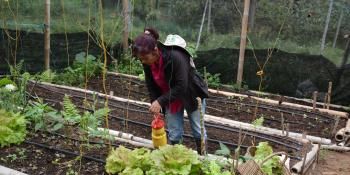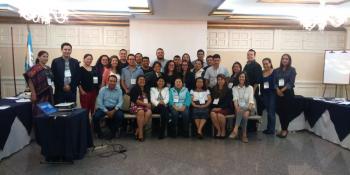Outside the box: Considering diversity among women in climate vulnerability

In southern Ghana, women are connected to the land in different ways from one another. This diversity translates into a suite of vulnerabilities to climate change, and a need for fine-tuned strategies that accommodate the range of women in a community.
“Women here are really doing well; they have managed to put children through school,” one women voiced this opinion during an interview in a southern Ghanaian cocoa farming community. While she was by no means alone in extolling the strong females and enterprising young ladies in the area, I found after speaking with a broad set of women in different communities that not all felt equally empowered about their achievements and future.
If you want to know more about research on closing the gender gap in farming under climate change:
- read our special blog series on Closing the gender gap
- watch the presentations and the panel discussion from the Closing the gender gap event
- follow the #AgGenderGap event hashtag on twitter
Cocoa contributes at least 75% of the incomes for the smallholders in the southern humid forest zone of Ghana. This $100 billion global industry makes up 30-40% of Ghana’s agricultural exports and has played a key role in enabling better standards of living and higher education. However, as a crop grown within a narrow band of conditions, there is considerable (and growing) concern about the potential impacts of dramatic shifts in weather patterns. Unfortunately, the predicted drier, hotter, and more variable climate for West Africa only reinforces those fears.
While even more uncertain for farmers than the projected changes in climate and weather, it is possible to glean current and potential vulnerabilities. Women are often front center in these discussions.
One size does not fit all
In research we like to simplify things to make it easier to pull out general lessons and recommendations - such as, how climate change affects women versus men. But many are realizing that a dichotomy may simplify too much. In southern Ghana, women are connected to the land in different ways from one another. One might focus solely on growing cassava and maize on her husband’s cocoa farm, while her neighbor cultivates cocoa on one plot and oil palm on another. This diversity translates into a suite of vulnerabilities to climate change, and a need for fine-tuned strategies that accommodate the range of women in a community.
Experience of climate and weather is not the same across the board. In these communities, women working a husband's land honed in on inter-annual and seasonal weather variation. “Heavy rains this year have caused cassava to rot in the fields. We will replant with maize,” one woman noted while discussing what conditions make a good or bad year. This focus reflects the nature of annual crops and the flexibility necessary for women to alter management decisions within short timeframes.
On the other hand, women managing their own cocoa were more conscious of extreme events, such as drought or unusually heavy precipitation, and a shift in trends. One woman who inherited land observed, “there is more massive sun and rain than in my father’s time.” For a perennial crop like cocoa, a long view makes sense. In actuality, the convergence of more variable and more extreme weather predicted for the region will likely be most catastrophic, because cocoa does best with relative consistency in precipitation and humidity.
Empowering to adapt
Considering these challenges ahead, it is critical to identify intra-gender specific means of adaptation. Education and access to information are often cornerstones of gender equality. In these Ghanaian communities, access to formal information networks was limited for women compared to their male counterparts. The majority of women cited a parent, husband, or peer as a primary information source, women with their own lands more often said they had benefited from extension. Radio programmes were especially popular among those women farming on a spouse's land.
Sika, the Twi word for money, featured prominently in most conversations as a primary constraint in women’s flexibility. Women with cocoa often voiced frustration over costs to hire workers for the more exhaustive manual labours (like ‘weeding’). For food crop growers, this could mean the ability to change crops or go into another form of trading. Feeling the lack of options, this latter group shared positive attitudes about the development of community-based organizations that could support micro-lending schemes and needs during hardship.
Attitude is an essential piece of the puzzle that has drawn little attention. Many women oppose the prevalent victim image, taking control of their lives, land, and future. Yet that sense of agency is not universal. Narratives of “hard-working women”, of the ability to directly impact their children's future (through furthering education and providing inheritance of land), surfaced among women who work their own cocoa farm. This group also had a greater number of women who had started their own businesses and diversified their pursuits. Characterized by the “nothing I can do” statements, expressions of powerlessness arose most often among those women only working on their husbands' lands.
Obviously optimism is not enough, and other information and financial resources could provide crucial assistance to adapt to climate change. It is, however, an essential question to consider - how much does an empowered attitude influences one’s ability to adapt, and what strategies are needed to address this among different women?



